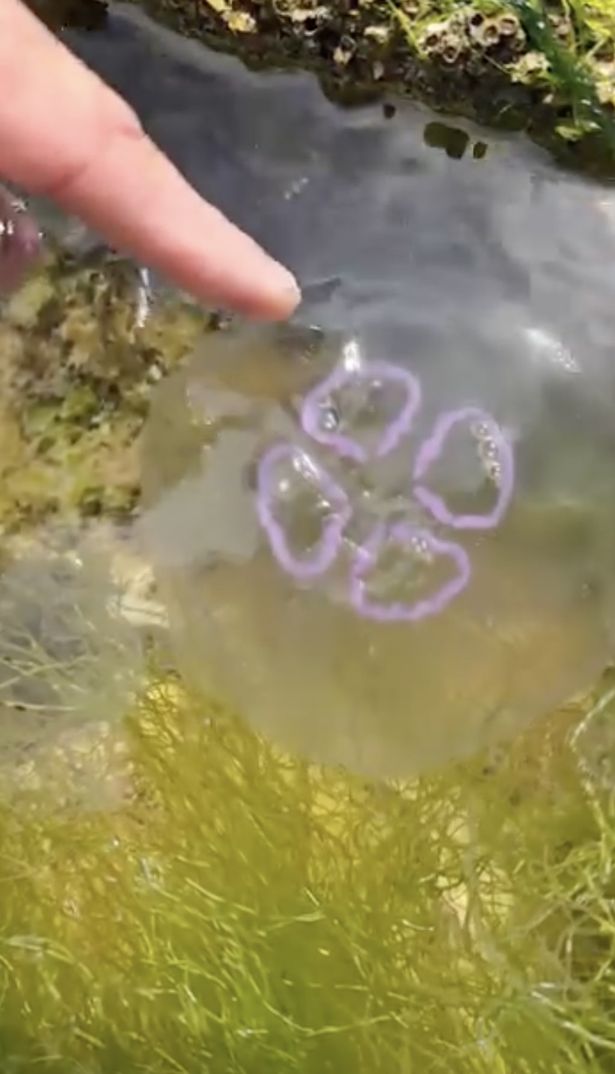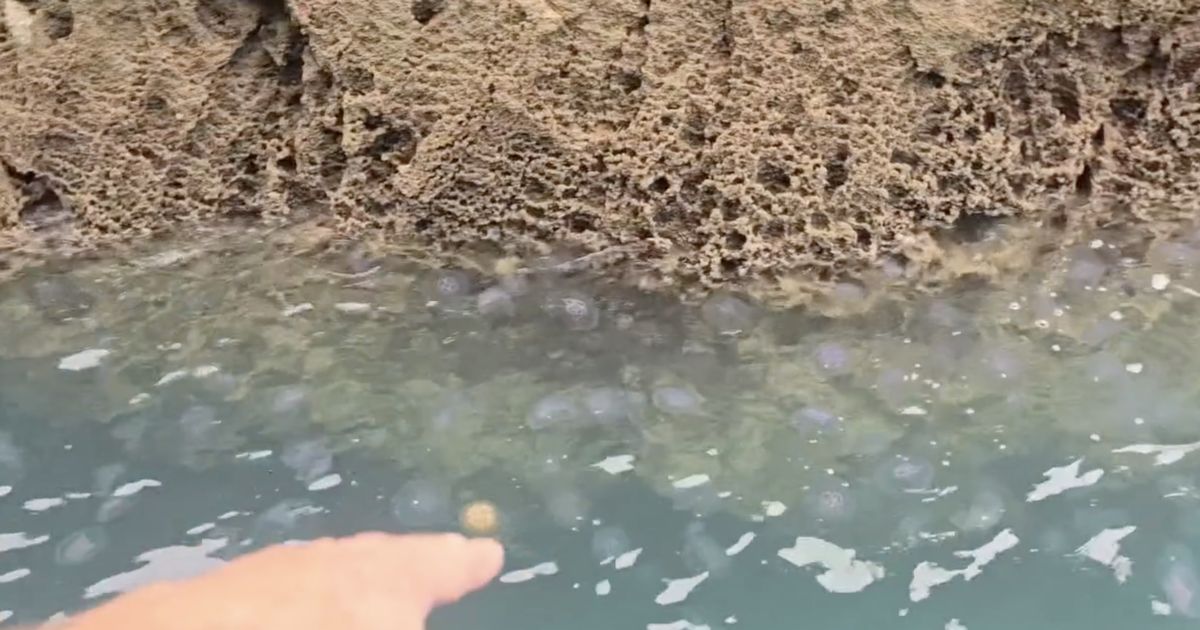The hot weather has sparked a ‘bloom’ and experts say we can expert more of the swarms in the weeks ahead
Neil Shaw Assistant Editor
07:23, 03 Jul 2025Updated 08:38, 03 Jul 2025
An invasion of thousands of stinging jellyfish has been triggered by the sizzling start to the summer as swarms were spotted at the foot of a cliff off a popular Devon beauty spot.
The compass and moon jellyfish were spotted in the sea off Brixham – and both can sting, with the compass sting said to be painful. The compass jellyfish are known for their distinctive brown markings, resembling a compass, and while not as dangerous as some other species, their sting can be painful and cause welts, rashes, and swelling that can last for hours, days or weeks.
They are usually found in the Mediterranean and Atlantic.
Moon jellyfish are more common in our waters and are said to have a mild sting that poses no danger to people. They were spotted off Brixham and Tristan Northway, skipper of the Four Reasons charter boat, said the recent warm weather caused the bloom.
 Tristan saw the swarm while on his boat (Jam Press)
Tristan saw the swarm while on his boat (Jam Press)
“There are thousands of them,” he said, “And depending what direction the wind is, they will gather in places. There are all sorts of jellies including compass, comb jellyfish which are really cool, and moon jellyfish.
“Because they water is warmer now we are seeing a lot more of them They only live for six to 12 months.”
It could be just the start of the jellyfish swarms as temperatures soar. The UK experienced the hottest day of the year on Tuesday, with temperatures getting as high as 35C.
And the scorching conditions could last throughout the month.
Compass jellyfish are known for their distinctive V-shaped markings and can inflict a painful sting according to the Devon Wildlife Trust. While not as dangerous as some other jellyfish, their sting can still be quite unpleasant and should be avoided. If stung, remove any tentacles with tweezers or a credit card, rinse with seawater, and then warm water. If symptoms worsen, seek medical advice.
 Jellyfish have distinct markings that allow you to identify them (Jam Press)Identifying Compass Jellyfish:
Jellyfish have distinct markings that allow you to identify them (Jam Press)Identifying Compass Jellyfish:
- They have a translucent, umbrella-shaped bell with brown, V-shaped markings radiating from the center, resembling a compass.
- They can grow up to 30cm in diameter and have 24 long, thin tentacles, and four thick, frilled arms.
- They are often found in the southern UK during summer.
Compass Jellyfish Sting:
- Compass jellyfish stings are painful, described as similar to a nettle sting.
- The tentacles can detach and continue stinging, even when separated from the jellyfish.
- Even dead jellyfish can sting.
What to do if stung:
- Get out of the water: Immediately exit the sea.
- Rinse with seawater: This helps remove any remaining stinging cells according to Project Jellyfish.
- Remove tentacles: Carefully remove any visible tentacles with tweezers or a credit card.
- Soak in warm water: Immerse the affected area in warm (as hot as tolerable) water for at least 30 minutes to help relieve pain according to the NHS.
- Seek medical help: If pain persists, or if you experience severe symptoms like difficulty breathing, chest pain, or severe swelling, seek immediate medical attention.
